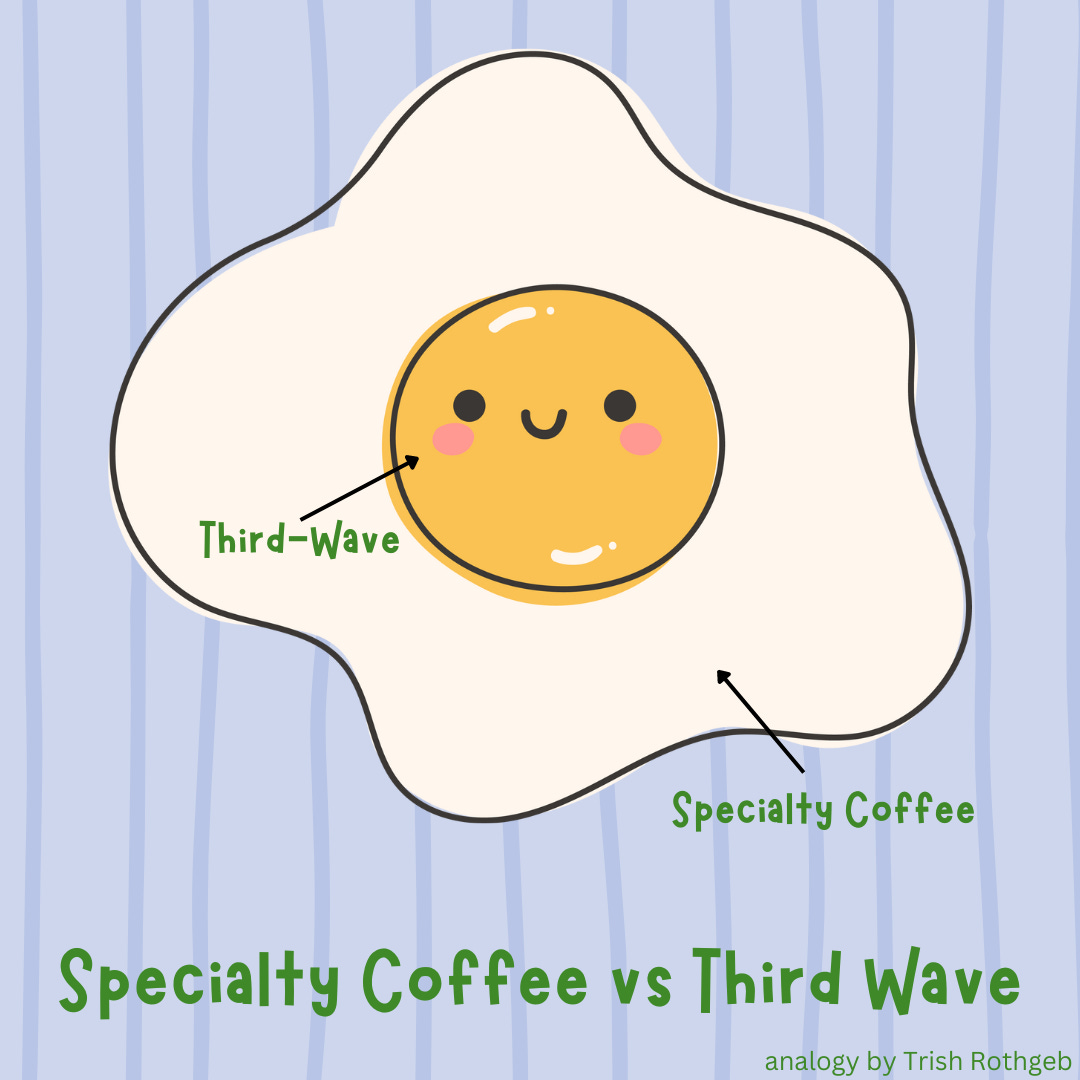Grinding Truths: The Role of Consumer Awareness in Coffee Culture
Tracing Historical Roots of Market Manipulation in Coffee Culture
Intro:
Education is central to a nation’s economic growth and prosperity, right? One would think that—yet the history of the United States reveals that by restricting education, one can propel economies forward.
Through this article, we’ll explore the dichotomy between education and market growth and how the foundations of Colonial America have aided in shaping the imbalanced market that exists today. Specifically, we’ll look at Specialty Coffee in the United States, where consumer knowledge—or lack thereof—plays a pivotal role in cafe operations, for better or worse.
Author’s Note: The interplay between education, power, and consumerism predates early American Colonies. It stretches far into the depths of history into the relationship of literacy & religion. For the sake of a narrower focus, I’m highlighting how the United States' foundations have led us to where we are today.
Glossary:
Specialty Coffee (Grade): Specialty coffee is any coffee that has achieved a score of 80 or higher out of 100 on a standardized score sheet by a panel of expert coffee tasters known as Q Graders.
Specialty Coffee (Shop): Any shop that sells specialty coffee1.
Third Wave Coffee: Third-wave coffee is a movement that prioritizes high-quality, ethically sourced coffee. It treats coffee as an artisanal product, focusing on the entire production process from farming to brewing. This approach emphasizes single-origin coffees, unique flavors, and education about coffee's complexity.
In this article ‘economy’ refers to the relationship between production, trade, and the supply of money in a country or region. In commonality ‘the economy’ is often discussed as a monolithic entity. However, this perspective oversimplifies the complex interactions that make up economic systems.
Just as plant cells are reliant on various organelles to function, an economy is comprised of many components that contribute to its overall health. Furthermore, trillions of plant cells are required for a plant to function. In the same vein (or shall I say—branch?), a magnitude of smaller markets feed into the overall American Economy.
Our [American] market has its foundations in keeping consumers ignorant and uninformed, for these consumers have provided a surplus profit to beneficiaries of the economy; the upper-elite.
Admittedly, this behavior isn’t always intentional—but why is it so ingrained in our society? How did it come to be this way, and WTF does this have to do with Specialty Coffee?
Historical Contexts and Modern Implications
The ruling class of Colonial America decided the exploitation of the lower classes would be normal the moment settlers landed upon the Americas. This exploitation is not only marked through the destruction of indigenous culture but through forced assimilation and signed legislature that prohibited enslaved, and sometimes free, Black Americans from learning to read or write between the years of 1740 and 18672.
The lasting-effect of these practices is visible in today’s market, as they’ve become the foundation for a market that is now reliant on a consumer base that is more-often-than-not, intentionally disconnected from the products they consume in order to provide profitability to people that benefit from separated socio-eco structures.
In specialty coffee, this is no longer theory—its a practice. There remains a significant gap in the consumer understanding of specialty coffee and third-wave practices. Many customers remain blissfully unaware of the difference between a single and double shot in their espresso drinks3. Even less people understand bean origin, or the different processing techniques that affect the taste and quality of their coffee. Unfortunately, this ignorance extends beyond the nuances of flavor profiles and even into fundamental aspects like caffeine content and brewing techniques. One of the most common iterations of this is the misconception that a 16oz latte contains more caffeine (espresso) than its 12oz counterpart—a standard that alternates between coffee shops.
Companies often capitalize on this disconnect through creative branding. By showcasing their [lower-quality] product as “specialty grade”, they can command higher prices for their products, appealing to the consumer desire for quality and exclusivity. However, without a solid understanding of what distinguishes a $6 latte from a standard run-of-the-mill latte, consumers are left to trust in a company’s branding rather than informed judgement. This allows non-third-wave coffee shops to maintain a higher profit margin by relying on the aesthetic [read: vibe] and superficial aspects of the coffee experience rather than\educating their customers about the product. In-fact, according to a consumer survey conducted by National Coffee Association of America, 48% of U.S. coffee cups are perceived by the consumer to be specialty.
As a result, the major players of the specialty coffee industries are the ones that benefit the most from a consumer’s lack of knowledge by cultivating a sense of loyalty based on brand image, rather than an appreciation for the quality or sourcing of the coffee itself.
TL;DR: The more a customer feels aligned with a brand’s identity, the less likely they are to question the value, origins, or intentions of their purchase.
“When I talked about it it wasn’t supposed to be shorthand for the industry to engage with itself, but a way to bring consumers into our world and help them engage with us.” —Trish Rothgeb
A shop can ‘sell’ specialty coffee without adhering to Third-Wave Principles.
Some shops use a singular-shot in their to-stay cappucinos / flat whites for a more traditional, EU/AUS experience.
Counter-point: While many coffee shops capitalize on the aesthetic appeal and perceived quality of their offerings, this strategy can backfire when consumers feel disconnected from the value and quality of the product they're purchasing—which is an ironic twist of being intentionally uneducated.
When a coffee shop raises prices, customers whom lack an understanding of ‘what coffee is’ may feel alienated. This alienation stems from a lack of transparency and education by the coffee shop, leading consumers to question the fairness of price increases and the overall value of the brand.
In scenarios where customers compare the price of a latte at one establishment to that of another, without understanding the nuances that might justify the difference, they are more likely to opt for the cheaper option, perceiving it as the better deal.
This decision-making process highlights a critical flaw in the industry’s reliance on an uninformed audience: The death of customer loyalty will almost always drive consumers to seek alternatives that are more financially viable.
By teaching the consumers about the craft behind each cup, coffee companies & brands can build a more loyal and discerning customer base that is more likely to associate the brand to the actual preparation and quality of the coffee itself. Educated consumers are more understanding and are more likely to appreciate the value of high-quality, ethically sourced coffee, and are more accustomed to changes to pricing structures.
Ultimately, transparency and education will transform the customer experience to one of passive consumption to active participation, where purchases are informed decisions that support a larger commitment to quality, sustainability and community—everything the SCA is supposed to represent.



